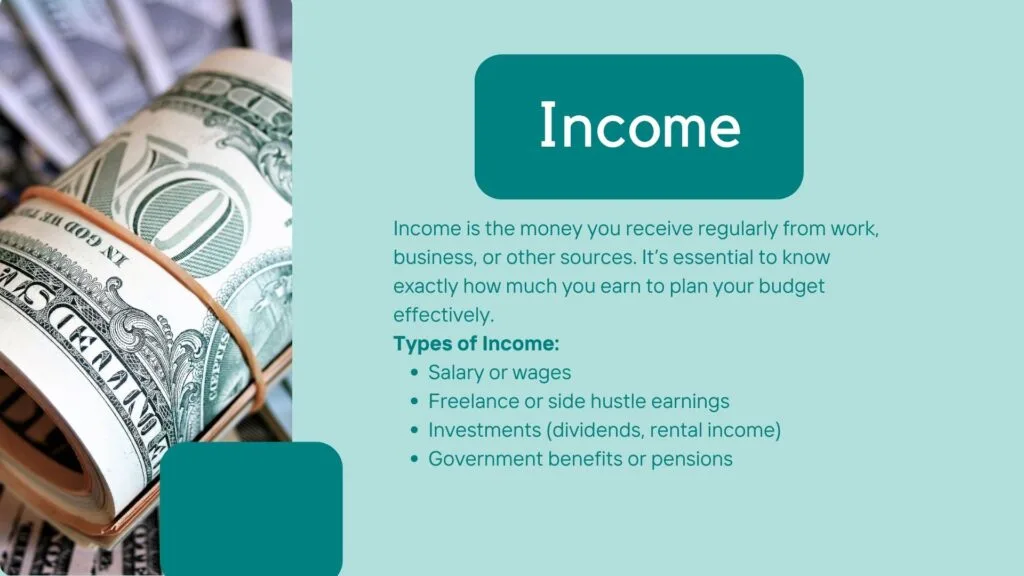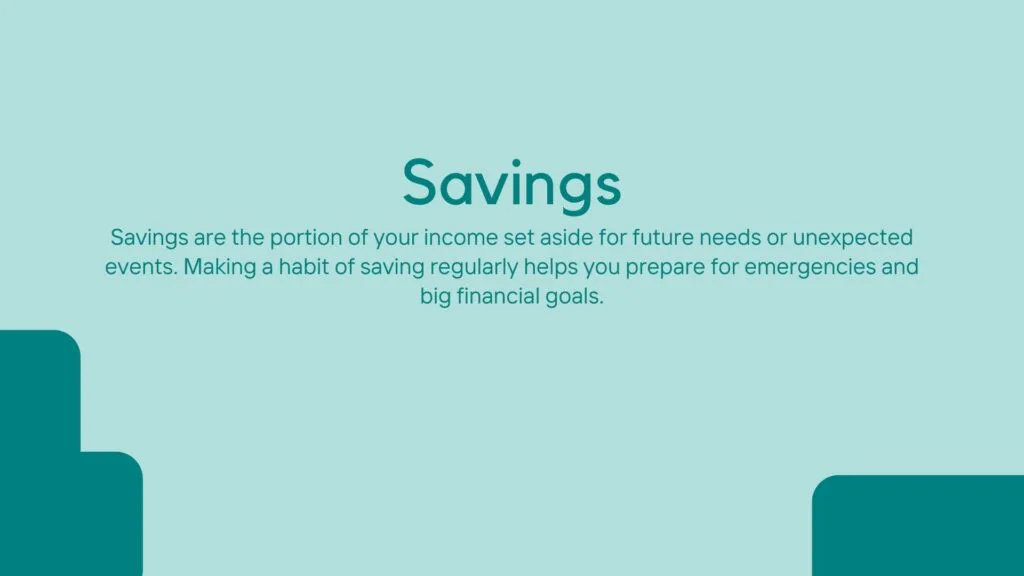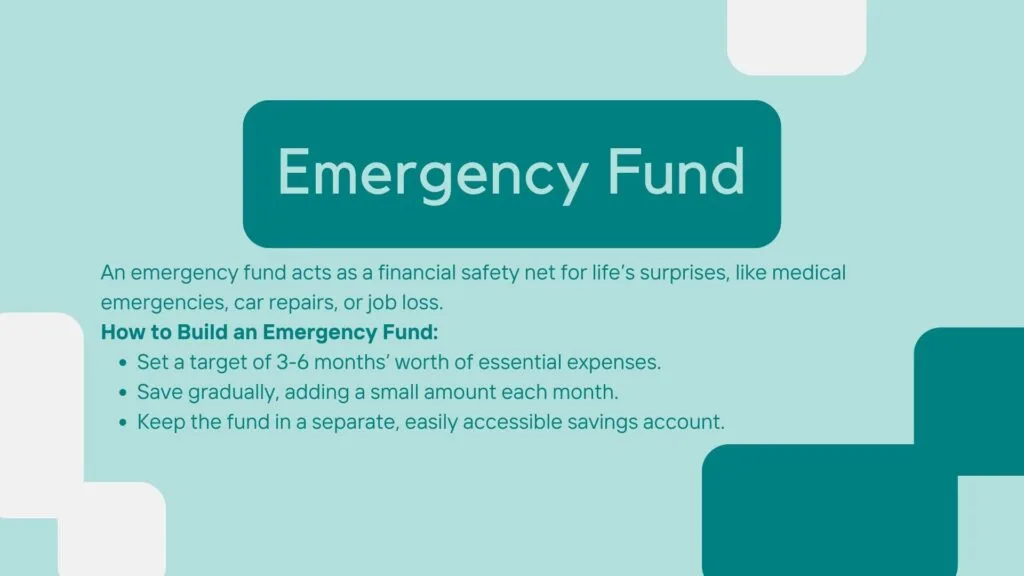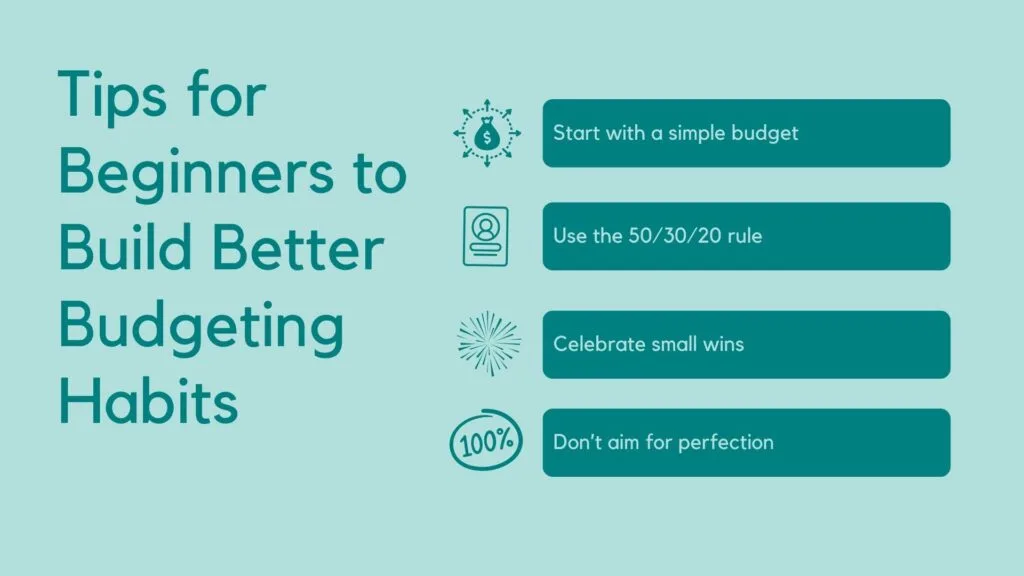Making a budget can be a great way to save money to buy something expensive, whether it is a necessity or a luxurious purchase. You can even start saving for your retirement, vacation, or even your marriage, or whatever suits you. But just thinking about your goal and trying to save without a plan is simply going to lead to a situation where you cut off too much of your income or too little.
So, this post is your guide to understanding how you should plan and start saving for your goals. We will point out the budget components that will help you plan and follow a proper budget.
READ MORE 10 Key Components of a Successful Budget Everyone Should Know
Budget Components
1. Income: The Starting Point

If you are planning to save for something, I’m sure you have a source of income, whether it’s a job, a business, a side gig, or even your pocket money if you are a student.
So, the first part of the plan is to figure out how much income you have and what the sources of your income are. Once you pin down where and how much income you earn every month, you can put a cap on one component and your average monthly income, based on which you can plan on how much and how to save.
2. The Must-Pay Items (Fixed Expenses)
Once you sort of your complete income earned, you move on to the second component, the fixed expenses, things that you must buy every month to have a healthy life. These expenses include your groceries, rent, subscriptions, EMIs, fuel, bills, or other obligations.
Pinning down your fixed income is a crucial component of the plan because this is the part to which you must allocate your income. Based on the total amount you spend on these, you can further plan where to cut expenses.
To pinpoint exactly how much you spend on your necessities, you have to note down your expenses for 2-3 months to make sure you have an accurate number.
3. The Flexible Costs
Just like the fixed monthly expenses, there are a different section of expenses you can call variable expenses. Variable expenses include spending that you don’t need but spend for your lifestyle or enjoyment. These expenses include things like cab costs, eating out, impulsive shopping, or any other things you spend to enhance your lifestyle.
Flexible cost is something from which you can cut your expenses. For instance, if you are someone who ends up eating out a lot and spending a few hundred bucks here, even by cutting this cost by a little, you can easily save more than $50 from your income.
4. Savings

And the most important part of a budget is “Saving.” Saving is the core motivator that inspires people, the drive to buy something, to save for that end goal. Saving is the part that will help you reach your financial goal.
So, how do you save? You know the two expenses that take the major part of your income, fixed and variable income; after considering those two, the remaining amount should be set aside for saving for your goal. Even saving up 10% of your income can lead to a significant contribution towards your end goal.
To make sure that you set aside money for saving, you can set up an autopay system that will deduct money from your account directly; you can put the amount in a fixed deposit, just lock it in your bank, or invest somewhere where the amount will increase in value.
5. Reducing Debt
One of the key components of a budget is to reduce the financial obligations towards others. If these are not paid on time, the interest on such debts will keep increasing, making your savings plan insignificant.
So, exactly is debt, and how do we manage it? Debt is the amount you borrow from others, whether it’s from a friend, bank, or other financial institution, such as a loan or credit card debt. You have to pay the debt using the money after you pay off your fixed and variable expenses; this goes from the remaining amount, which you also use for saving.
There are two very popular strategies to handle debt repayment. One is the snowball method, where you pay small and easy-to-pay loans to build up confidence and momentum. The second is the Avalanche method; here, you focus on paying the high-interest debt obligations to reduce higher-level stress.
6. Emergency Fund

An emergency fund is a specific portion of your income kept aside for unexpected situations such as job loss, medical expenses, car accidents, etc.
So, how do you build an emergency fund, and how much is enough for it? An emergency fund also comes from the remaining income that you have for saving and debt repayment. You have to start by setting a little portion aside from your income into a different savings account, which is quickly accessible during emergencies.
Regarding the amount and how much to save, the rule for emergencies is to save for 4-6 months’ worth of your expenses, including your fixed and variable expenses, debt repayment amount, and other EMIs. 4-6 months’ worth of money provides you with enough time to get back on your feet, whether you lost your job or are in an emergency; the amount can help you carry through your rough time and give you enough time to get a new job and get back on your feet.
7. Budget Reviews
Once you are on your way per the plan, things will start to work out, but that does not mean it’s going to be the same plan forever. Make sure you keep an eye on your budget and review it every 3 months to make sure it’s still relevant and helps you reach your goals.
Why review your budget? Because your life won’t stay the same forever, your jobs can change, your income can increase, you could have a new expense in the house, or even get married; these major changes also take a toll on your budget, so it is important to update your budget according to these new changes.
Tips for Beginners to Build Better Budgeting Habits

- Start with a simpler budget format that only includes your fixed and variable income; those are easier to track. Once you get comfortable with the basics, add more categories to your plan.
- Use the 50-30-20 method to start; it’s one of the most popular budgeting formats where you allocate 50% of your income towards basic necessities, 30% towards your wants and lifestyle expenses, and the last 20% towards your savings, investments, debt, and emergency funds.
- To keep yourself motivated, celebrate the small wins, like when you stick to the budget for 3 months and see your savings account grow a little, these keep your motivated.
- It’s important to stick to the budget, but if you spend over your budget sometimes, it’s okay; just don’t make a habit of it.
READ MORE 6 Effective Steps to Implement the Saving Percentage Rule : 50-30-20 Rule
Frequently Asked Questions (FAQs)
What are the basic components of a budget?
Fixed expenses, variable expenses, emergency funds, saving & investment, and debt repayment are the basics of a budget.
How much should I save each month?
The idea is to save around 15%-20% of your total income, but you can start smaller and increase it over time.
How do I budget with an irregular income?
Track your income for 4-5 months and plan your budget based on the lower end of that estimate.
Final Statement
A budget can be a great way to start small and achieve big things. Whether it’s savings for the down payment for a new house, a new car, a mobile device, or even a vacation plan, budgeting can help you reach any financial goal.
All you have to do is start on this journey; once you start planning and following a budget, the start will be a bit of a rocky journey; there will be times when you will end up spending out of budget, but with time comes discipline, which will guide you to your end goal.
So, make sure you try to stick to your budget; sometimes, spending extra is fine, and change your budget plan with new changes in life.


1 thought on “7 Budget Components for Beginners”